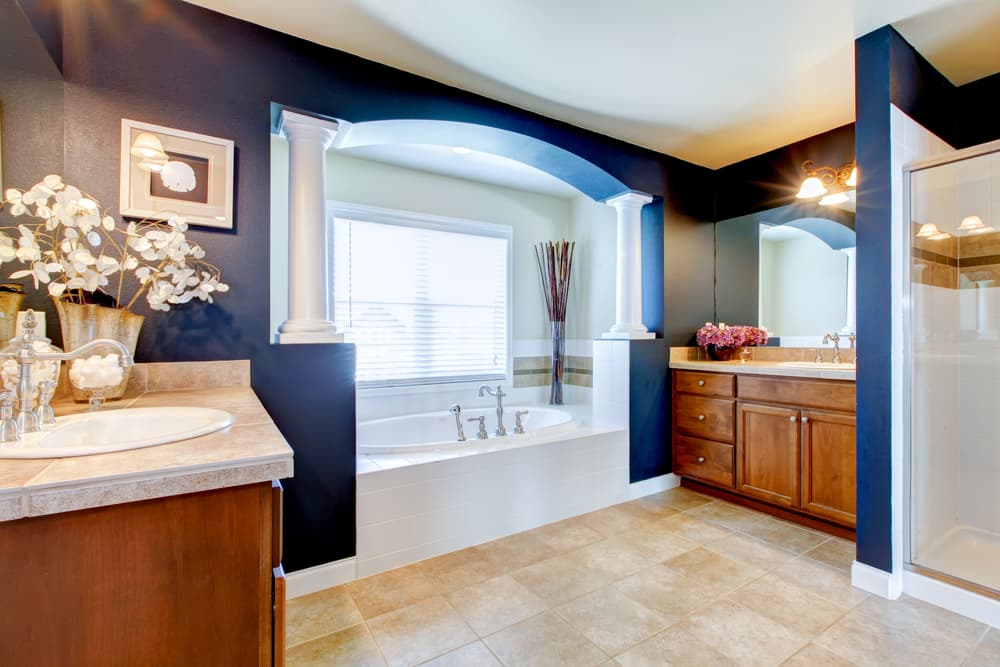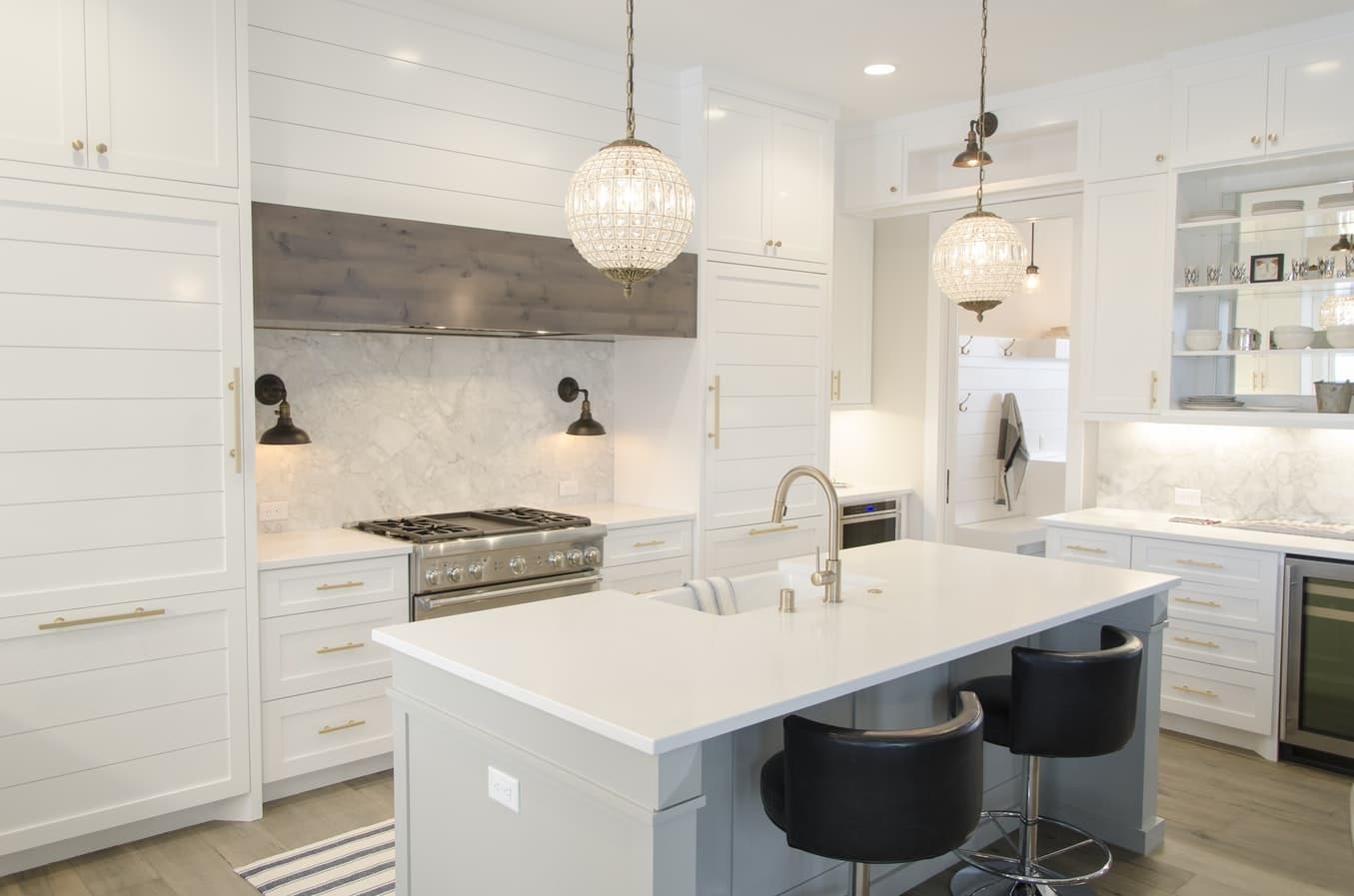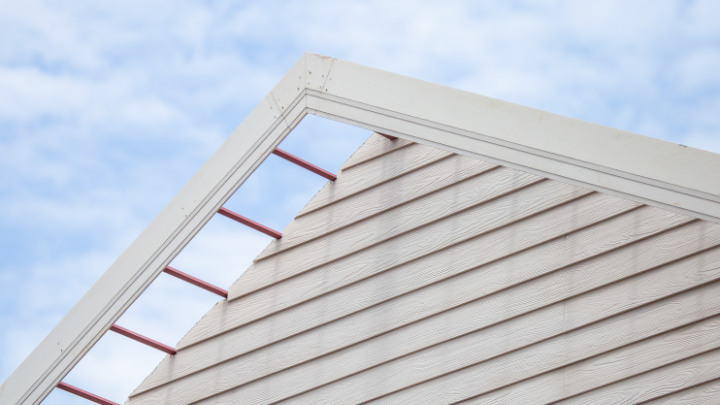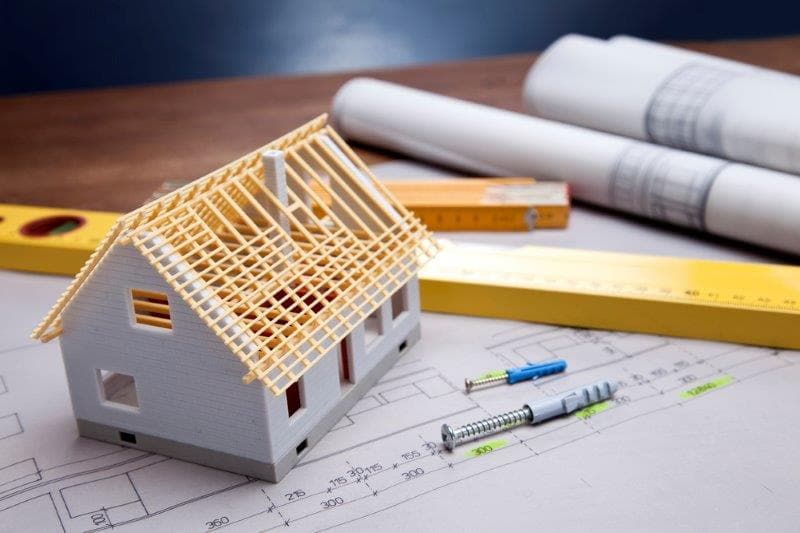Are you looking for a contractor?
Submit our quick form and get quotes now!
Kitchen Countertop Dimensions - What Are the Standard Measurements?
By Editorial Team
Updated on October 11, 2024
Are you renovating your kitchen and need a new countertop? Should that be the case, you probably already have a few questions in mind about it.
What criteria should you consider to choose both ideal and regulatory kitchen counter height and depth? What options are best suited to your needs in terms of height, depth, and length? Whether you’re hoping for an optimal or aesthetically pleasing prepping station, we’ll guide you in making the best project-based decision.
Height, Depth, and Length: What Is the Standard Size of a Kitchen Counter?
Source: AVA Construction
Generally speaking, the standard kitchen countertop height is 36 inches, or just under one metre. It also has a standard depth/width of 25 inches, with a length of roughly 96–120 inches. In terms of thickness, it’s often 1 ¼ inch, regardless of the manufacturing material used.
However, note that new countertops are now made thinner, and can be roughly ½- or ¼-inch thick. Depending on the manufacturing materials used, thinner doesn’t necessarily mean weaker. The strength of quartz won’t be affected, as opposed to that of granite or marble.
As for the latter, we don’t usually recommend making countertops thinner without some type of additional support. Likewise, an inch-thick or more countertop upholding a kitchen sink or cooktop is likely to last longer as opposed to a thinner one.
How to Measure a Countertop: Standard Width, Thickness, and Height
Measure height: Use a measuring tape and gauge the distance between the floor and the countertop.
Measure depth: Position the tape measure at the edge of the counter and measure the distance across.
Measure length: Use a measuring tape to gauge the distance from one end of the counter to the other.
Measure thickness: Position the tape measure vertically against the edge of the counter and gauge the distance above and under the countertop.
Narrow Countertop
It’s important to point out that opting for a narrow countertop installation is a possibility, meaning one that’s 22 inches deep. However, if you wish to do so in the hopes of gaining space in your kitchen, keep in mind that you’ll be foregoing the installation of a standard-sized wine fridge or mini beverage refrigerator beneath your countertop, as these appliances will inevitably stick out.
High or Two-Tier Countertop Dimensions
Even though not all countertops have a second tier, those directly facing an open space or a dining room often feature an island-like seating area. Moreover, they’re often installed on one end of a kitchen island in smaller apartments that aren’t spacious enough for a kitchen table.
A second-tier countertop is at least 12 inches deep, given that it’s either higher or lower than the rest of the countertop prep space. It’s said to be the necessary amount of space for anyone to sit down and eat comfortably. Although, if your seating area is simply an extension of your regular kitchen countertop, and positioned at the same height, its depth can be limited to 8 inches.
When it comes to cantilever-type installations, meaning one end is without supports and could risk fracturing if a too-heavy load rests on its surface, some type of support should be added underneath it to act as reinforcement, especially if it overhangs by more than 12 inches. In any case, contact a kitchen designer or contractor.
Choosing Stools for a High Countertop
If you’ve just put in a raised bar area, you’ll need to carefully choose your bar stools so everyone can sit comfortably during mealtime.
Moreover, if the countertop is 36 inches high, your stools should be between 24–26 inches high. If by any chance your counter is 42 inches high, your stools should be more like 30 inches high.
Aside from stool height-related concerns, note that you’ll also need to consider the vertical space directly between the seat and the countertop’s surface. There should be roughly 9–12 inches of space so just about anyone can sit comfortably without restricted leg space.
As for the horizontal space that separates the counter stools and the edge of the countertop, for the same reasons explained above, there should be 14–18 inches of clearance.
Wrapping this up with a few pointers regarding the number of stools that should be placed under your countertop seating area. Is your countertop between 72–96 inches long? If so, you’ll then need to bank on three stools. If the length of your counter is more modest (between 48–60 inches long), limit the number of stools to two.
In any case, by respecting the above-mentioned guidelines, you’re sure to have between 24–30 inches between each stool.
Unconventional Countertop Suited to Specific Needs
Although the previously mentioned dimensions are considered standard, note that you can definitely waver from them. Adapted layouts are valued, especially when it comes to designing a comfortable kitchen in which homeowners can cook with ease.
Indeed, for tall individuals, increasing countertop heights to 42 inches (roughly 106 cm) can significantly increase worktop ergonomics. People of smaller stature or wheelchair-bound individuals will greatly benefit from lowered countertops—ranging from 29 inches (roughly 73 cm) to 34 inches (roughly 86 cm). Everything can be tailored to a homeowner's specific needs.
Whether your new countertop features conventional sizing or not, note that finding one priced under $100 is entirely possible.
Recommended Countertop Installation Guidelines
Source: AVA Construction
1) Leave a space fit for the sink
If you choose to DIY your kitchen countertop installation, note that you’ll need to factor in enough space to seal your sink. To do so, remember to leave a ¾-inch gap all around it.
2) Keep in mind all appliance sizes
If you choose to keep your current appliances, you’ll need to factor in their dimensions when determining the height, depth, and length of your new countertop. However, if you plan on purchasing new appliances, make sure the size and depth of your counter and appliances are compatible.
However obvious this might be, we’re making a point of mentioning it because it can be quite a struggle, not to mention a time-consuming task, to return or exchange appliances. So, to avoid any unforeseen circumstances, get out your measuring tape!
Design Your Dream Kitchen with the Perfect Countertop
Choosing the right kitchen countertop dimensions is more than just a question of style; it’s a decision that will affect the functionality, comfort, and ergonomics of your culinary prep space. Feel free to consider customized options, ensuring your counter is perfectly suited to your needs and lifestyle. Working with industry professionals makes for a worthwhile and sure investment. That way, you can add aesthetic and user-friendly appeal to your home for years to come.
Need tips and tricks to pick out a new kitchen countertop? Check out our article How to Choose Your Kitchen Countertop.
Looking for more insight about the cost of a new kitchen countertop? Check out our article about it.
Looking for something else?
Table of contents
6 min read
Get 3 free quotes for your project!
Submit a project and get 3 free quotes!
Are you a contractor?
Join our network and receive real leads!
Download the price guide for renovations
We’ll be emailing you the latest market price guide for renovations.
Related articles
The latest industry news, interviews, technologies, and resources.

Editorial Team
•07 Nov 2023
Although kitchens and bathrooms are two distinct rooms with very different features, they both require a specific type of paint. Learn more about why regular paint isn't appropriate for these rooms:

Amanda Harvey
•07 Nov 2023
When it comes to the kitchen, one distinct element that doesn’t seem to be going anywhere is the kitchen island. An island offers elegance and value, as these unique, multipurpose units work to enhance the amount of space available to you. A correctly situated and installed island will transform the way you use the space adding a counter, extra storage space as well as a focal point and even the potential for an extra dining area.

Editorial Team
•01 Aug 2024
Are you considering installing fibre cement siding during your next renovation project? While the motivational factors behind such an undertaking are likely plenty, you may still be hoping to get pertinent information about the cost of installing such a siding to make a well-informed decision.

Editorial Team
•07 Nov 2023
Renovating your home to update surfaces, fixtures or other aspects is the reality of many homeowners. This is especially true if you’re looking to modernize or make rooms more comfortable and beautiful.

Amanda Harvey
•07 Nov 2023
It has become common to preserve and experiment with concrete surfaces both inside and outside of the home. Modern homeowners are exploring the possibilities of painting concrete, offering an alternative to its more commonly known drab shades of grey.